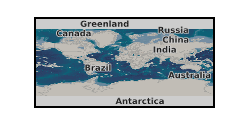Fluid dynamics
Type of resources
Topics
Keywords
Contact for the resource
Provided by
Years
Formats
Update frequencies
-

These data consist of spatial and temporal datasets for 11 different small-scale laboratory experiments of fluid-driven fractures, described in the paper Up, down, and round again: the circulating flow dynamics of flux-driven fractures (Chalk and Kavanagh, accepted in Physics of Fluids, February 2024). These experiments, conducted at the University of Liverpool, are analogue models of natural fluid-driven fractures in glacial and magmatic settings. Fractures were created by injecting water or silicone oil into transparent gelatine at a constant rate. The total experimental data set consists of 11 different experiments named: S1,S2,S3,S4,S5,W1,W2,W3,W4,SH,WH. S experiments involve the injection of silicone oil, and W experiments involve the injection of water. The raw data consist of a temporal series of jpegs from camera recordings of each experiment, located in the subdirectory "frames". For all experiments except for WH and SH, the data also consist of a temporal series of csv files containing spatial velocity data of the internal fluid flow, located in the subdirectory "PIV". These data are described in further detail in the metadata file in the raw data directory.
 NERC Data Catalogue Service
NERC Data Catalogue Service